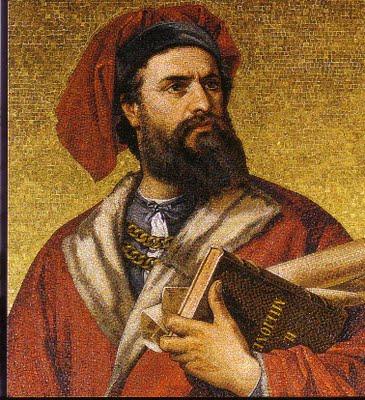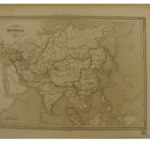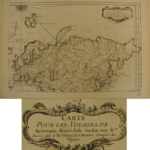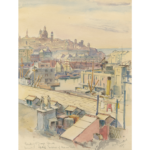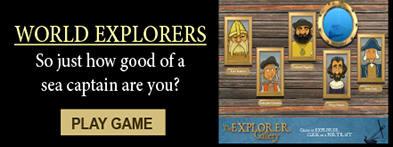Marco Polo
Explorer
Medieval
Quick Facts:
Marco Polo is known for traveling along the Silk Road to China, where he explored and documented much of Asia not yet explored by Europeans.
Introduction
Marco Polo was a merchant in Venice before he became the famous explorer we know today. At 17, he left Venice with his father and uncle. They traveled the Silk Road to China where he met the great ruler Kublai Khan. Marco traveled much of China and the east, and his stories were written into a popular book. His book would go on to inspire other explorers. It is even said that Marco Polo’s exciting stories were a favorite of another famous explorer – Christopher Columbus.1
Biography
Early Life
Marco Polo was born in 1254 in Venice, Italy. Not much is known of his early childhood. He was born into a family of wealthy merchants. His father and uncle, Niccolo and Maffeo Polo, were merchants who traveled often to Asia to trade valuable materials such as jewels and silk. As a child of a merchant family, he would have received a nice education that included reading, writing, and basic math.2 Marco’s story begins with his father and uncle’s journeys. Niccolo and Maffeo left Venice in 1254 and traveled east. Marco would not see his father again until he was 15. China and other parts of eastern Asia were ruled by Kublai Khan, grandson to the Mongol warrior Genghis Khan. Kublai Khan was responsible for re-opening a 5000 mile trade route between Europe and Asia called the Silk Road.3 The Polo brothers traded on this road for many years.
When they were ready to return home, war broke out between Kublai Khan and his brother Hulagu. This made the roads unsafe, and they were forced to stay in Bukhara (located in present day Uzbekistan) for three years. In 1264, still in Bukhara, they met an ambassador heading to Kublai Khan’s court in Khanbaliq and joined him on his trip. They hoped the Khan would provide them with safe passage home. They reached the court in 1266. Kublai Khan was very interested in hearing about the Polo’s culture and religion. He asked them to serve him as his ambassadors to the West.4 The Khan gave the Polo’s a letter to give to the Pope asking him to send one hundred priests and holy water to convert his people to Christianity.5 The Polo brothers left on their mission; however, the death of the Pope in 1268 held up their plans. It would not be until 1271 that they were able to return to Khanbaliq. This time, young Marco Polo would join them.
Voyages
Principal Voyage
Marco Polo’s voyage began in 1271 when he traveled to Kublai Khan’s court in China with his father and uncle. Marco was 17 years old. They were only able to get two of the one hundred priests Kublai Khan wanted. They sailed the Mediterranean to the Middle East, then traveled over land, all the way through Persia (modern day Iran), the Gobi Desert, Mongolia, along the Silk Road, and into China. The voyage took about three and a half years until they finally reached Kublai Khan’s palace.6 The Khan noticed Marco’s interest in Mongol customs and culture. Marco already knew four languages prior to his journey, and he quickly picked up the Asian language. He also learned their writing, and even their style of war.7 Kublai Khan was very impressed with Marco Polo. So he made Marco one of his ambassadors. This gave Marco special permission to travel freely throughout the Mongol Empire.
Kublai Khan often sent messengers, or envoys as they were called, on missions to different places. When they returned, they would report of their mission, but never about the people and customs of the places they went.8 So the Khan began asking Marco to travel on missions. On these trips, Marco took great note of the lands and peoples he encountered, and the spices and jewels he saw. He told the Khan about all these things on his return. And Marco himself became very familiar with many aspects of Asian culture. He served the Khan for seventeen years before deciding to head back home to Venice. After all his years of traveling on the Khan’s behalf, Marco Polo had knowledge of, or had actually visited, a greater number of different countries of the world than anyone else known.9
Subsequent Voyages
At first, Kublai Khan was unwilling to allow the three Polo men to leave because he had become dependent on their services. He eventually allowed the men to return home. They chose to sail rather than make the trek over land. It was a long distance that took them China around India, and then traveled over land through Arabia, and by sea again across the Mediterranean to Venice. This journey across the Indian Ocean took two years.They reached Venice around 1295; Marco Polo had been gone for twenty-four years. The Polos were not welcomed back warmly like they had hoped. They had been away from home so long that they struggled to speak Italian again and were unrecognizable to their own families. He told his story to the people, but many of them did not believe the great voyage of Marco Polo.
Later Years and Death
A few years after the Polos returned to Venice, war broke out between Venice and Genoa. Marco Polo was captured during the naval battle of Curzola. While in prison, he told his story to a fellow prisoner named Rustichello da Pisa. Da Pisa wrote down Marco’s detailed accounts of his travels to the east. The book was called Il Milione – Italian for “The Million.” He was released from prison in 1299, and returned to Venice. Marco continued his life as a merchant, although he never left Venice again. He married a woman named Donat Badoer in 1300. They had three daughters – Fantina, Bellela, and Moreta. Marco died in his home in January 1324, at almost 70 years old. He was buried in the Church of San Lorenzo.10
Legacy
The Polos were not the first Europeans to reach China and the east. But Marco Polo’s travels were inspiring. He wrote about the landscape, the Middle Eastern people, and details about the Mongol empire. These descriptions gave many Europeans their first look at the civilizations to the east. His tales continue to be debated even today. His original book is lost. It was translated many times into different languages, and these translations often conflict each other. But the most important thing we know is that Marco Polo helped make great connections between the East and the West.
Endnotes
- Susan Bivin Aller, Christopher Columbus (London: Lerner Books, 2009), 12.
- Nick McCarty, Marco Polo: The Boy Who Traveled the Medieval World (Washington DC: National Geographic Society, 2006), 12.
- Laurence Bergreen, Marco Polo (New York: Alfred A. Knopf, 2007), 27.
- Bergreen, Marco Polo, 33.
- L.F. Benedetto, The Travels of Marco Polo (New York: Routledge, 2014), vii.
- Benedetto, The Travels of Marco Polo, 11.
- Marco Polo, The Book of Ser Marco Polo, the Venetian: Concerning the Kingdoms and Marvels of the East, Volume 1, ed. Henry Yule (Cambridge: Cambridge University Press, 2010), 27.
- Polo, The Book of Ser Marco Polo, the Venetian, 27.
- Polo, The Book of Ser Marco Polo, the Venetian, 29.
- “Marco Polo,” New World Encyclopedia, last modified September 20, 2016, http://www.newworldencyclopedia.org/entry/Marco_Polo.
Bibliography
Aller, Susan Bivin. Christopher Columbus. London: Lerner Books, 2009.
Benedetto, L.F. The Travels of Marco Polo. New York: Routledge, 2014.
Bergreen, Laurence. Marco Polo. New York: Alfred A. Knopf, 2007.
McCarty, Nick. Marco Polo: The Boy Who Traveled the Medieval World. Washington DC: National Geographic Society, 2006.
New World Encyclopedia. “Marco Polo.” Last modified September 20, 2016. http://www.newworldencyclopedia.org/entry/Marco_Polo.
Polo, Marco. The Book of Ser Marco Polo, the Venetian: Concerning the Kingdoms and Marvels of the East, Volume 1. Edited by Henry Yule. Cambridge: Cambridge University Press, 2010.
Gallery

